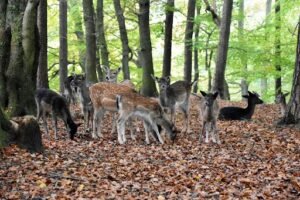Contents
History of Gorkhas
The term Gorkha or Gurkha is usually referred to as soldiers of Nepalese origins who served in the legendary British Brigade of Gurkhas over many generations. There are also other regiments designated as Gurkha and still serve in the Indian Army as of 1991. For more than 175 years, from the early 1990s, Nepal has served as recruits for British Gurkha regiments and Indians.
In Singapore and Brunei retired British Gurkhas have also served in specially raised security units. The term Gurkha or Gorkha has no distinct ethnic connection but they are derived from the name of the old kingdom of Gorkha (Gurkha), the territory which roughly encompassed the present-day district of Gorkha. Gorkha is a district in Nepal which is in the mountains famous for Manaslu Circuit trek, 100-130 kilometers west of Kathmandu. In the eighteen century, the soldiers from the kingdom of Gorkha established an international reputation for their martial qualities and successful invasions of Tibet.
The king’s warrior expanded the Gorkha Kingdom eastward across the Himalayas to Sikkim the whole group in the area came to be known as Gurkha soldiers. Legends say that Gurkha soldiers never drew their service-issued kukri without drawing blood, even if they had to draw their blood. Kukri is curved shaped Nepalese knives which represent the Gurkha soldiers. Although, the legend added immeasurably to Gurkhas’ reputation for toughness which is probably a tradition of a bygone era. Gurkhas are among the more memorable of modern military history as they surround the Gurkhas. In the mid-sixteenth century, the old Gorkha kingdom was established by Dravya Shah who was the founder of Shah Thakuri kings that has reigned in Nepal ever since two centuries.
Under the young and energetic king Prithivi Narayan Shah the Gorkha kingdom began a major expansion and conquered the Kathmandu valley and unified numerous petty kingdoms while consolidating his control over an area substantially as that of modern Nepal. Legendary King Prithici Narayan Shah ruled for 32 years from 1743 to 1775. In 1763 the two regular Gurkha regiments were designated as Sri Nath and Purano Gorakh, which were also the first two regular regiments. As the Gorkha rule was expanded the responsibility for establishing military strong points and for maintaining a local militia were given to district governors (bad hakim).
Gorkhas the Famous for Armys
In the eighteenth century, the military powers of the Nepalese soldiers became known from where the forces were known as Gorkha invaded Tibet. Neal itself is home to certain ethnic groups such as Limbu, Rai, Magar, Tamang, Sherpa, Gurung, Chhetri, Thakuri, and many more who won reputations as warrior tribes. The bulk of the kingdom’s soldiers up to the rank of captain were furnished by the Gurung, Magar, and Limbu. Higher ranks were used to be filled by the Thakuri, Chhetri, and Rai groups, As the officers came almost exclusively from families of the ruling elite.
It is a perplexing fact until the middle of the nineteenth century, armies were raised in need and disbanded when the need expired, which created a sizable reserve of highly trained veterans. However, the unemployment problem recurred. Only the higher castes were retained for military service between wars.
By Prime Minister Bhimsen Thapa the first steps towards the creation of a sizable permanent military were started. Bhimsen Thapa ruled in Nepal from 1804 to 1837 and raised the army strength from ten thousand to fifteen thousand persons. He has also built the arsenals, ordnance workshops, and cantonments and introduced the large parade ground constructed at Tundikhel in Kathmandu in the period of 1991.
Where does Gurkha come from?
Gurkhas are the brave soldiers traditionally recruited from the hill people of Nepal, right back in 8th century Hindu warrior Guru Gorakhnath has traced their roots. In 1814 the Gurkhas were first encountered when the British East India Company fought against them in the Anglo-Nepalese War. In 1815 the first Gurkha troops were recruited with military abilities and honorable tactics.
The relationship between Nepali Gurkhas and Britain was enabled in 1816 after the end of the Peace Treaty and Britain was able to recruit Nepali Gurkhas. The relationship with Nepal is the oldest ally of Asia.
Who are they?
Originally, Gurkhas soldiers from Nepal, named after the small district of Nepal Gorkha. There is much bravery of Gurkhas in history. In 1816, Gurkhas were recruited into the British Army and lasted for 200 years. As Gurkhas are good in their natural daily life they are known to be fearless in combat. They have remained renowned for their loyalty, professionalism, and bravery to this day.
Best of the Best
After representing the Gurkhas they have served with distinction throughout the world. Brave Gurkhas have earned an incredible 13 Victoria Crosses for acts of extreme valor, along with the countless other medals. Now Gurkha is famous for its name on the globe.
Conclusion
Gurkhas are the brave soldiers with brave regiments belonging to Nepal. With the brave heart and stunning performances, they have become and renowned as Gorkha’s. There is a famous slogan of Gurkhas, “If a man says he is not afraid of dying, he is either lying or he is a Gurkha”.




